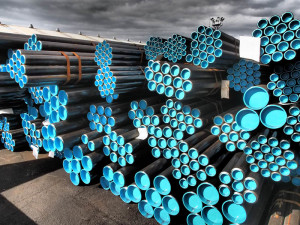
Philippine merchandise imports increased 30.8% in January 2016, reversing December 2015’s 25.8% decline, according to the Philippine Statistics Authority (PSA).
PSA said imports for the first month of the year amounted to US$6.825 billion from $5.219 billion in the same period a year ago.
“This imports growth is the highest level reached since November 2010. Significantly, the value of imported capital goods, a leading indicator for strong economic activity, grew by 80.4 percent in January 2016. This was the highest monthly year-on-year increase of capital goods since September 1996,” said Socioeconomic Planning Secretary and National Economic and Development Authority director-general Emmanuel F. Esguerra. PSA is an attached agency of NEDA.
Imports of capital goods accounted for 37.7% of total merchandise imports for the period. It has been increasing by double digits since February 2015, except for a brief respite in August 2015.
“This capital goods-driven surge in imports in January 2016 is a good indication that investor confidence in the country remains high. The continued increase in capital formation is expected to come from the expansion of public and private construction, along with durable equipment investments,” the Cabinet official said.
The increase in January imports was led by metal products (with a 73.9% share), followed by electronic products (67.1%), transport equipment (61.5%), industrial machinery and equipment (57.6%), telecommunication equipment and electrical machinery (48.2%), miscellaneous manufactured articles (27.1%), iron and steel (25.4%), other food and live animals (14.3%), and plastics in primary and non-primary forms (3.5%).
Importation of raw materials and intermediate goods in January was valued at $2.475 billion, accounting for 36.3% share of the total imports. It increased 12% over last year’s figure of $2.210 billion. Semi-processed raw materials, which had the biggest share of this commodity group with 33.7%, was valued at $2.3 billion, up 19.6% compared with $1.924 billion in January 2015.
“The double-digit growth in imports of semi-processed raw materials, particularly manufactured goods, since the second half of 2015 indicates that there is a growing domestic market. This bodes well for industrial production. Likewise, the higher purchase of materials and accessories for the manufacture of electrical equipment, which is used as an intermediate good for semiconductors, also has a positive effect on electronics exports,” said Esguerra.
Purchases of consumer goods likewise reported a positive growth of 29.3% to $1.038 billion in January 2016 from $802.97 million registered in January 2015.
Mineral fuels, lubricants and related materials, which had a 10.2% share to total imports, decreased 6.8% from $748.22 million in January 2015 to $697.39 million in January 2016. Petroleum crude contributed the biggest share of imports for this commodity group with 4.8% and had a value of $330.25 million.
China remained the country’s biggest source of imports with a 17.9% share in January 2016. Japan followed with 10.7%, while the United States registered an 8.9% share.
“With the exception of the Philippines, all other ten selected Asian economies saw a decrease in imports in January 2016, with South Korea, Singapore, and China experiencing the steepest declines,” Esguerra said.





